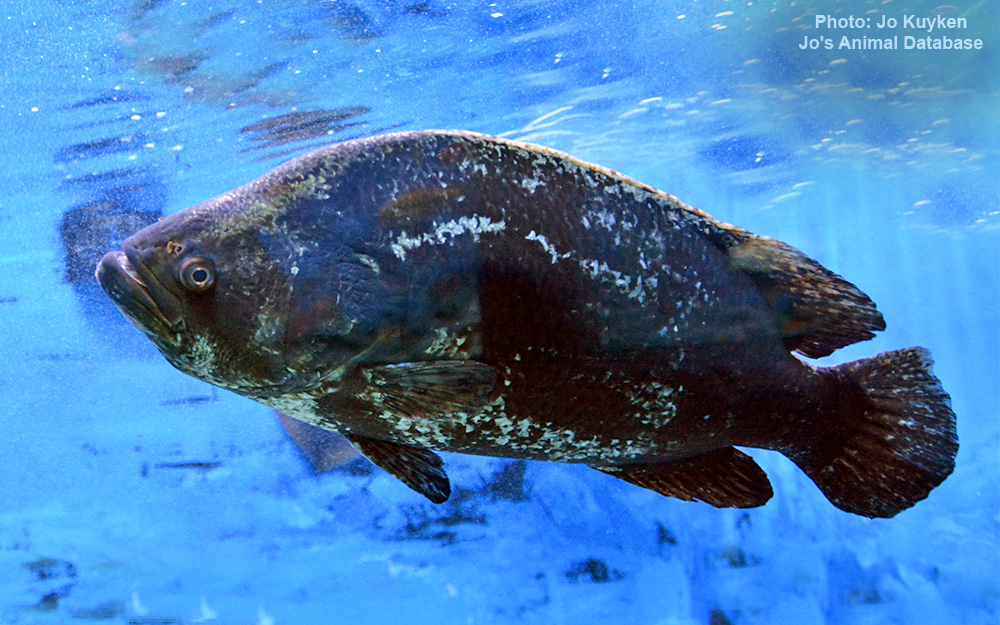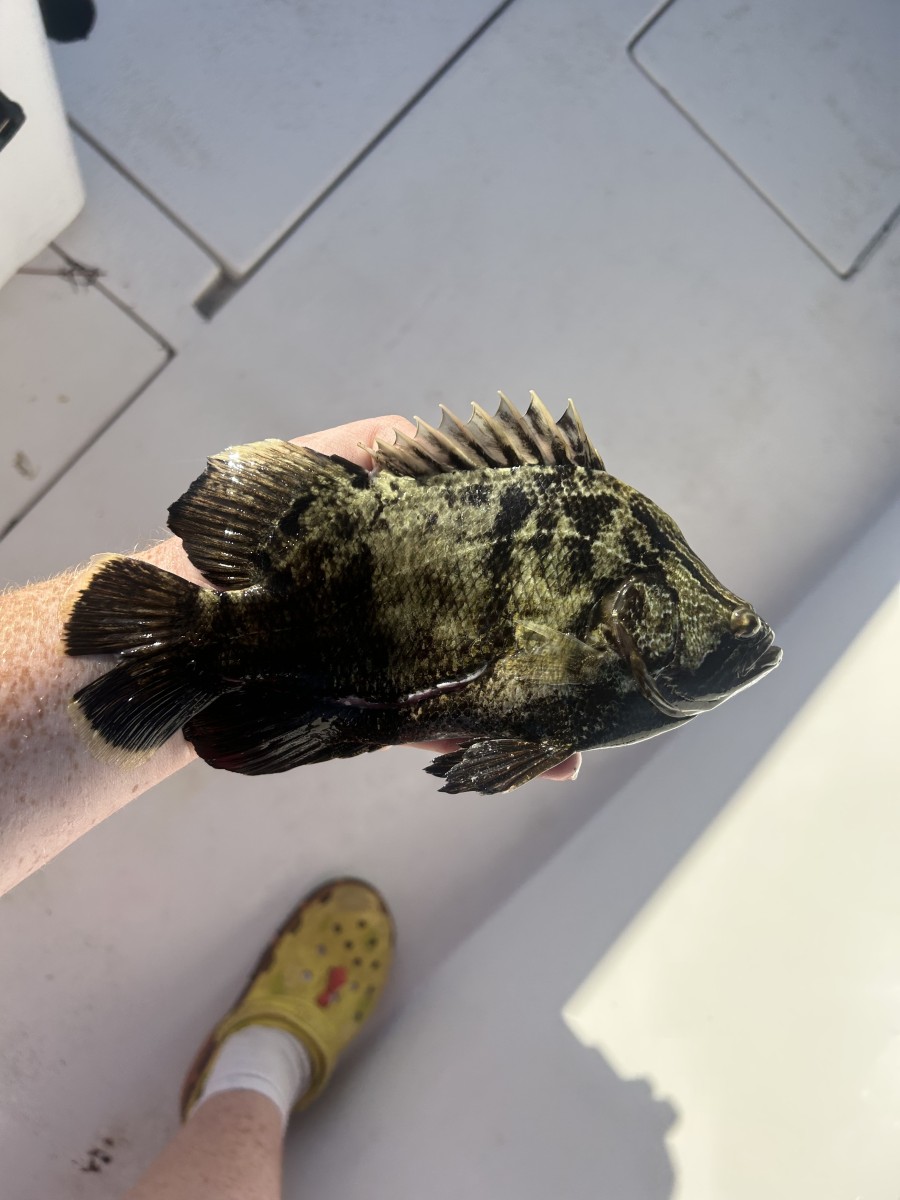Atlantic tripletail
(Lobotes surinamensis)

Image source: Jo's Animal Database
Classification
General data
The Atlantic tripletail or tripletail (Lobotes surinamensis) is a warm-water marine fish found across the tropics; it can grow to 90 cm long and weigh 18 kg.
It is also known by fishermen by names like flasher or steamboat. Young fishes float on their sides, often beside flotsam, and appear like a dry leaf.
Geographical distribution
The Atlantic tripletail is the only fish in the family Lobotidae that can be found in the Atlantic Ocean. It is, however, distributed across tropical seas especially Indonesia region which is commonly found in wet market in Pontianak, West Borneo.
In US waters, Atlantic tripletails are found from Massachusetts and Bermuda to Argentina, the eastern Atlantic and Mediterranean Sea, from Madeira Island to the Gulf of Guinea, the eastern Pacific from Costa Rica to Peru, and the western Pacific from Japan to Fiji and Tuvalu. They are rarely found north of Chesapeake Bay. They are found on the Gulf Coast from April to October and then migrate to warmer waters during winter. In the spring, tripletails concentrate just offshore of two particular spots: Port Canaveral, Florida (March–June) and Jekyll Island, Georgia (April–July).
Habitat
Atlantic tripletails are found coastally in most, but not all, tropical and subtropical seas. They are semi-migratory and pelagic. Normally solitary, they have been known to form schools. They can be found in bays, sounds, and estuaries during the summer.
Juveniles are usually found swimming under patches of Sargassum algae. In the Gulf of Mexico, adults are usually found in open water, but can also be found in passes, inlets, and bays near river mouths. Large adults are sometimes found near the surface over deep, open water, although always associated with floating objects. Young fishes are also often found in or near shipwrecks, beams or supports, jetties, flotsam and sea buoys. Fry are usually found in waters that exceed 84 °F (29 °C), greater than 3.3‰ salinity, and more than 230 feet (70 m) deep.
Tripletails are well known for their unusual behavior of floating just beneath the surface with one side exposed, mimicking a leaf or floating debris. This is thought to be a feeding strategy because of the locality of their prey items and the floating structures associated with this behavior. The behavior has resulted in a rapidly increasing incidence of recreational fishermen sight-fishing for the floating tripletails, resulting in severe bag and length restrictions in Florida and Georgia to ensure future populations.
Biology
The Atlantic tripletail has scales that extend onto its dorsal, anal, and caudal fins and a head profile that concaves as the fish ages. It has a compressed but deep body with a triangle-shaped head. The eyes are small, but the mouth is large. The bases of the dorsal and anal fins are scaled and the pectoral fins are shorter than the pelvic fins. The name tripletail is given because of the fishs three rounded fins: dorsal, caudal, and anal.
Coloration
Juvenile Atlantic tripletails are colored a mottled yellow, brown, and black. Adults are jet black. When it lies on its side at the surface, the tripletail is sometimes confused for a floating mangrove leaf. The juveniles have white pectoral fins and a white margin on their caudal fins. Adult tripletails have varied mottled color patterns which range from dark brown to reddish brown, often with a tint of gray.
Size, age, and growth
The Atlantic tripletail grows to 35 in (89 cm) in length and weighs up to 41 lb.
Diet
Atlantic tripletails are opportunistic eaters; they feed on a variety of foods, mostly small finfish such as gulf menhaden, Atlantic bumpers, and anchovies. They also feed on invertebrates such as blue crabs and brown shrimp, as well as other benthic crustaceans.
Primary source: Wikipedia.org












